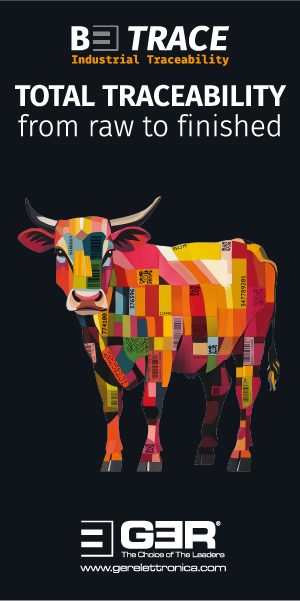Market Intelligence - 23.11.21
Macroeconomics
The climate conference in Glasgow ended and as much as the leading nations tried to sell the result as a success, climate activists were disappointed by the outcome. The differences of the positions of many nations became clear at the meeting, and no matter how good the communiqués sound, it is what is actually done that counts. We can only hope that technology will prove more successful than many politicians and climate activists imagine today.
What we were able to see of the summit between the US and Chinese presidents was encouraging. Overall, one could see that the rather aggressive terminology of the last few months had given way to a more diplomatic variant, and that despite all the potential for conflict, at the moment the focus is probably more on de-escalation. This is probably due in particular to domestic political reasons on both sides.
In the financial markets, discussions about the further development of interest rates and central bank policy remains the main topic. In the meantime, it is becoming increasingly clear that the appeasement policy of the European Central Bank is rather empty rhetoric. Price increases and inflation now have a firm grip on the world, and hopes that this is only a short-term development are fading by the day. Statistically, base effects and a mathematically weaker inflation trend may set in from summer 2022, but this does not change the real price increases that normal consumers are already facing today. Without a significant reduction in commodity prices and transport costs, we must assume that prices will continue to rise, and in some countries this will be exacerbated by climate policy and rising taxes.
The stock markets can continue to enjoy high prices owing to good corporate results and a lack of alternatives. Towards the end of the period investors decided however, to lock profits in. This development will not continue indefinitely and no one knows what will ultimately trigger the trend reversal. It will probably simply be rising interest rates in the end, but bubbles in other markets, such as real estate, may also prove dangerous. The monetary policy of the last few years has led to a massive increase in debt, both in the public and private sectors, and that’s why rising interest rates will become a major problem sooner or later.
Despite the inflationary threats, the rise in gold prices remained very manageable and after passing the $1800 mark, the price initially remained limited just above this level. The hype around cryptocurrencies as inflation protection can be reconciled only partially with the relatively small rise in the gold price.
The increase in energy prices has come to an end for the time being and the price of gas and oil has calmed down considerably for the time being. The price of oil fell by a few dollars and is now hovering around the $80 mark.
The dollar benefited significantly from expectations of faster interest rate hikes in the US. It is also likely that the situation on the Polish-Belarusian border will have a negative effect on the value of the euro.
Leather Pipeline
Many activists used the stage at COP26 in Glasgow to take a stand against meat consumption. It is clear to everyone that with increasing prosperity and a growing world population, new paths must be taken in the food industry, but it must also be clear that cultural and historical developments cannot simply be changed and reversed at the drop of a hat. Just look at the record slaughter statistics in the US and the never-ending demand in export markets for beef. In Asia in particular, there is still no sign of a decline. On the contrary, China in particular, but other countries as well, are working hard to increase their herds and become more self-sufficient.
In Australia, too, herds are being restocked to be able to serve export opportunities again in the next few years. This means that the great drive to reduce greenhouse gases in agriculture is still limited to a large extent to Central Europe. Here the activists are very successful in the media as well as in the political arena, but they are moving in a similar bubble as the opponents of nuclear power in Germany or the opponents of coal internationally. In any case, a result can only be achieved by working together, otherwise one only strengthens competition on other continents and what is achieved or saved locally is then expanded and enlarged elsewhere. If one does not take a more pragmatic view here, one risks not only the climate, but also prosperity and social stability in our part of the world.
Particularly frustrating in this context is the stance of some celebrities. Particularly noteworthy here is Stella McCartney, who first had her company rescued by a major leather-processing corporation and then seems to have engaged in greenwashing. The leather industry will probably not be able to win a media battle against mainstream celebrities, but it was very welcome that the new president of COTANCE, Manuel Rios, published an open letter at the end of COP26 to try to present the facts. Unfortunately, we do not know if this open letter has found its way into the mainstream media in the same way as the original fact-poor statement from Ms McCartney at COP26.
It is also worth taking a look at the manufacturers of meat and milk alternatives. Owing to a sharp deterioration in business prospects and unfulfilled expectations, the share prices of many of these companies have been falling for weeks; the development is somewhat reminiscent of the dotcom bubble at the turn of the millennium. The departure from old habits and the ‘climate rescue’ is more media hype than a real change in consumer habits.
In Europe, the clouds continue to gather over the leather industry and especially over the automotive leather industry. More and more publications are repeating the PR campaigns of many car manufacturers, writing about the end of leather in the interiors of automobiles. We can only keep emphasising that leather is absolutely not a ‘must have’ product. It is a material that customers should be free to choose. It does not have to justify itself for environmental or any other reason; it remains a recycled product with outstanding characteristics. The main automotive industry often seems unwilling to admit this, but the longevity and use advantages that leather still offers are undeniable. Development never stops, but at the moment the substitutes cannot hold a candle to leather in terms of durability and other properties. No synthetic fibres or plastics are anywhere near as sustainable. This is fortunate because otherwise, it must be said, the problems the leather industry faces already would be considerably greater.
It will become clear in the near future whether the current marketing campaigns will cause major problems for the automotive industry itself, because the substitute materials could possibly trigger very negative feedback from vehicle owners in a few years’ time. In any case, the automotive industry would be well advised to look into the possibility of refurbishing or replacing seat covers at an early stage.
In addition to these recurring fundamental questions, there were of course also the market events and day-to-day business in the last few weeks.
The raw material markets have remained under pressure. The fall in price in most markets was not as severe as in the weeks and months before, but a reversal of the trend still seems out of the question for now. It is encouraging that despite all the negative press and the impression that leather is losing ground as a material, the furniture industry is obviously continuing to rely on leather. After a very good last season, there were fears that the demand for furniture and thus also for leather furniture would not last a second season. However, this seems not to be the case. Despite the overall negative environment, the production of furniture leather is very stable, in Asia and in Europe. Furniture leather continues to be very price sensitive, though, and when raw material prices were high over the summer, demand remained rather subdued. Since the beginning of October, though, the prices for the raw materials that tanners use to make furniture leather have adjusted significantly and the demand has increased steadily again. This has helped reduce a surplus of cow hides that had built up.
For male hides, which are mostly used in leather for the automotive and shoe industries, the situation is a bit more complicated. Large suppliers from the US have adjusted their prices relatively quickly as a result of high slaughter numbers, problems with transportation and good results in the meat business. This led to an increase in hide sales and a reduction of unsold inventory. Prices dropped 30%-40% from peak levels.
European raw material suppliers have relied too much on the European market, focusing on lower production and believing that they could defend higher price levels. This was a serious mistake, especially in light of a massive drop in production in the automotive leather sector. Very quickly, it became clear there were simply not enough buyers to buy an increasing supply of hides at prices that were no longer in line with the global market. This has led to a big correction in the past weeks; it remains to be seen if this price adjustment is sufficient or whether there is still some more to correct.
Fortunately, however, the Europeans have also benefited in recent weeks from improved demand in Asia and presumably this has already relieved some of the market pressure. Opinions on this vary widely and are pretty much in line with what stakeholders want. However, probably everyone would be well advised to be a bit more in tune with the simple realities of volumes, prices and market outlook. Many things can be explained much more simply than some people think.
For now, we are busy planning for the next few weeks or months. The interruption in production over the Christmas period will be followed by the break for Lunar New Year in Asia. The planning of the flow of heavy male hides will be a bigger challenge in Europe, probably until the end of January.
No major changes are taking place in the split market. However, in Europe, one can already feel the effect of a lower amount of split material. As a result, prices for blue splits have improved somewhat here and there, although processing is also suffering from massively increased energy costs at the moment. We have received reports from China that the prices for blue splits have been corrected significantly upwards. This probably also makes it somewhat easier for tanners to pay the price for cattle hides. At the same time, our sources have also reported that the demand for cheap, lighter wet blue splits has also increased significantly. This is not surprising, as prices for alternative materials have also risen massively due to the increased price of oil and supply shortages, making cheap leather quite attractive in price.
As cheap as many lambskins and sheepskins may be, the improvement in demand in this sector has unfortunately been moderate. There is still no real sweeping improvement, although the prices for so many sheepskins are so cheap that the finished product really does not have to hide behind the plastic alternatives. In this area, it can be seen once again what happens when certain materials simply no longer play a role in industrial production. It remains a mystery why clothing manufacturers do not make greater use of this opportunity.
The coming weeks will probably be characterised in most cases by planning deliveries and production, or taking care of preparations for the Christmas break and the end of the year. There are only a few weeks left and then the year 2021 will also end, but without the end of the pandemic being in sight. We still have about three or four months of the busy season ahead of us. Transport times, at least from Europe to Asia, have returned to normal and therefore there is justified hope that the business will also stabilise, excluding the vacation breaks. However, the risk of possible surprises remains high in many respects.
















